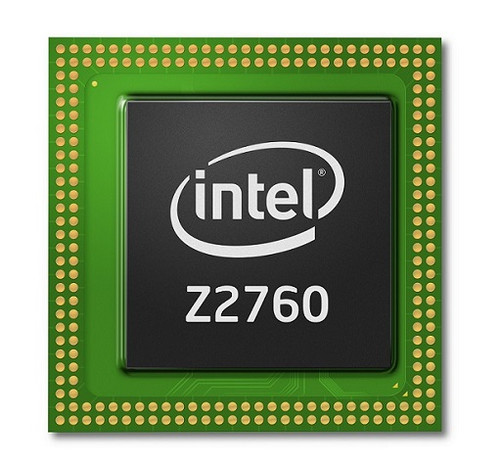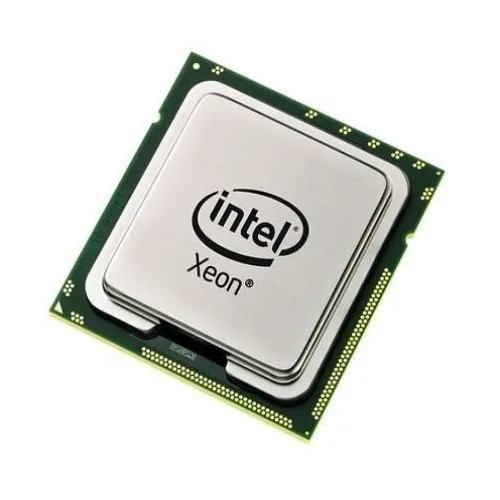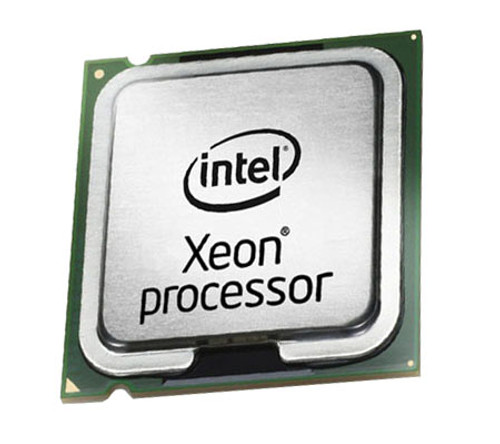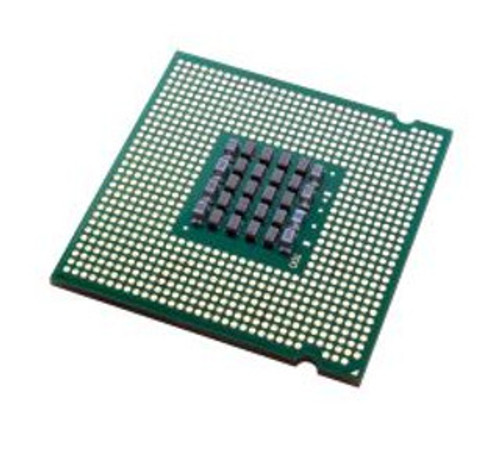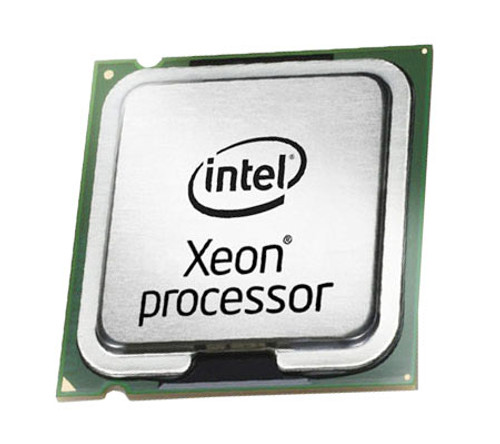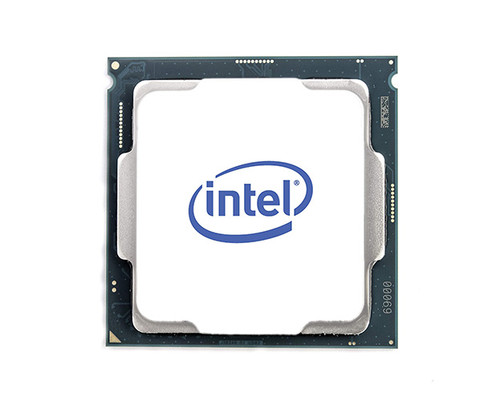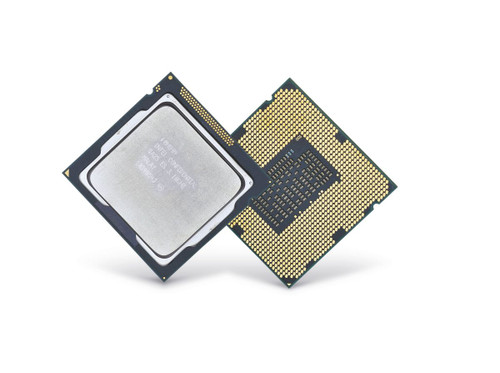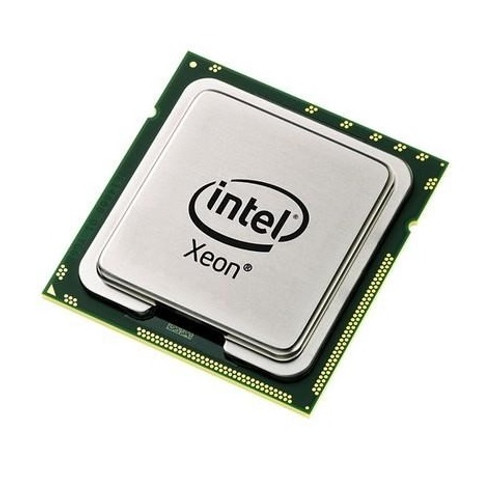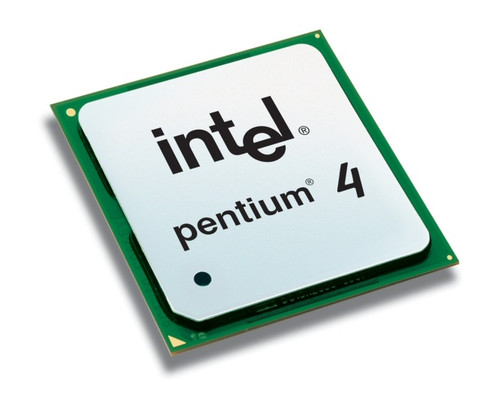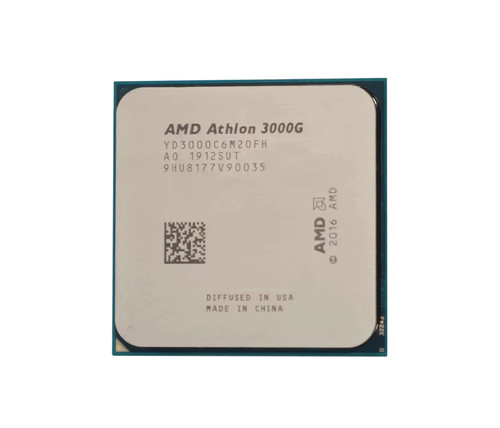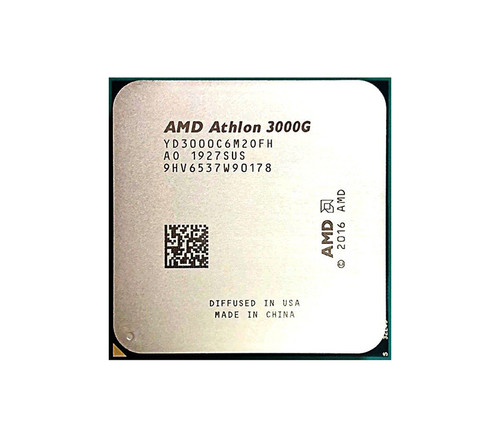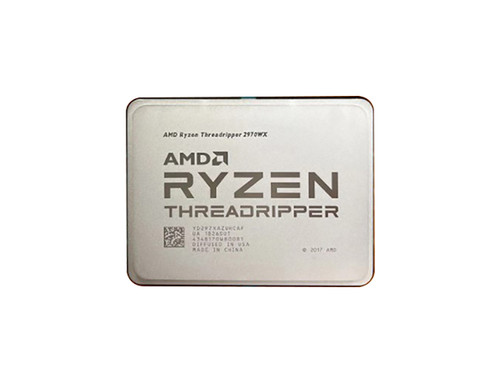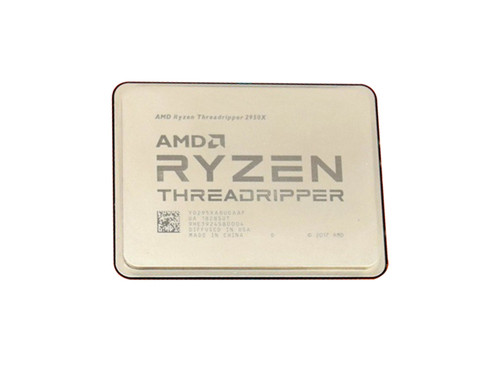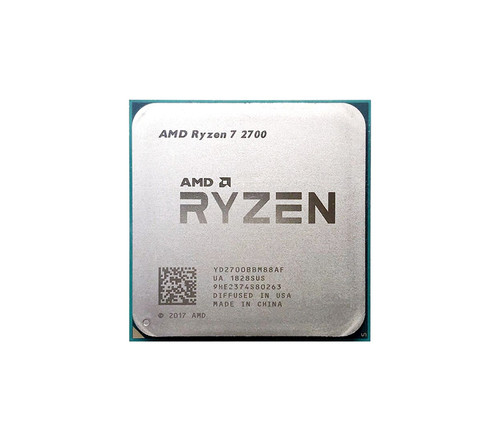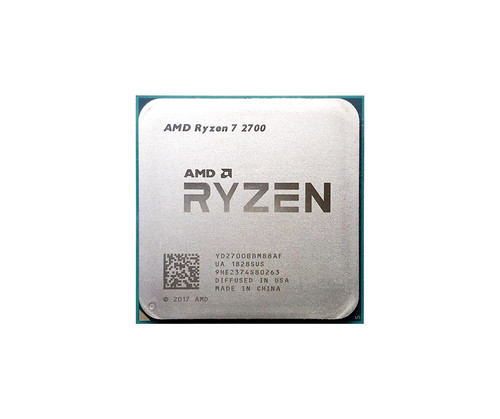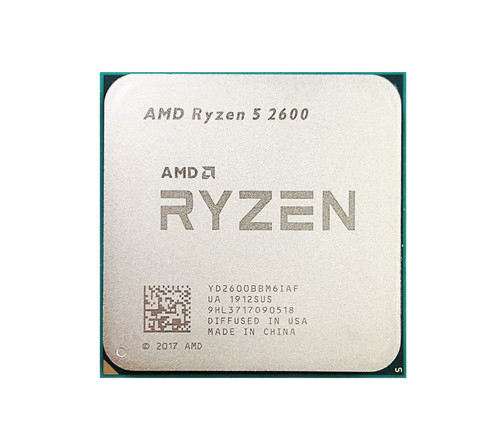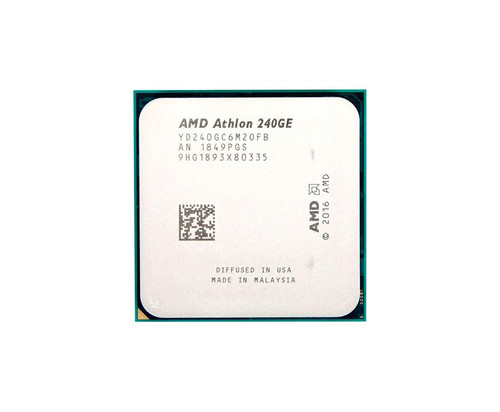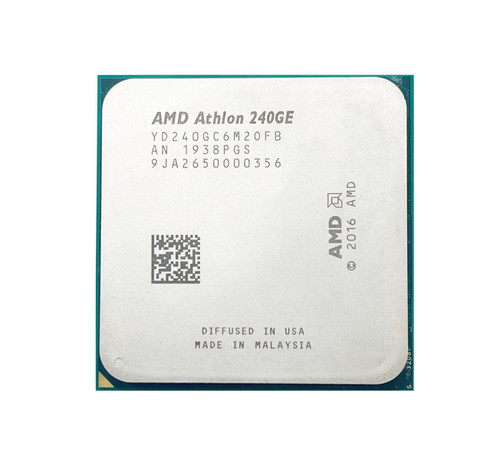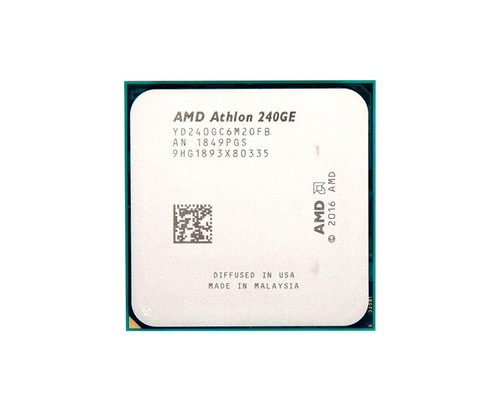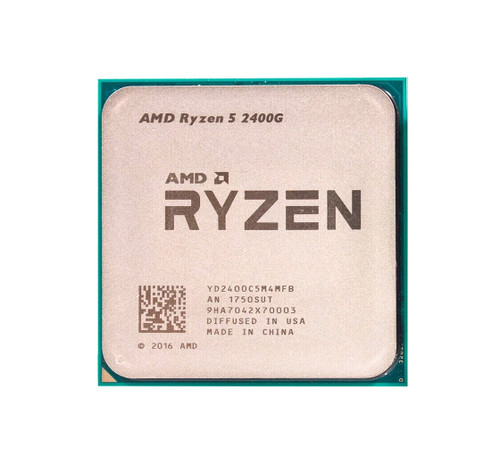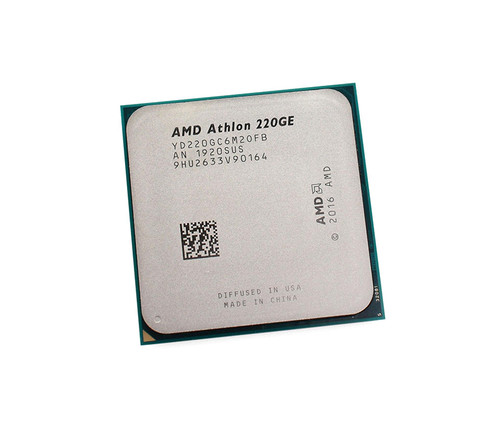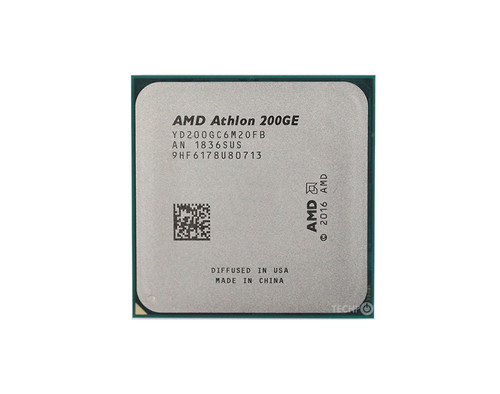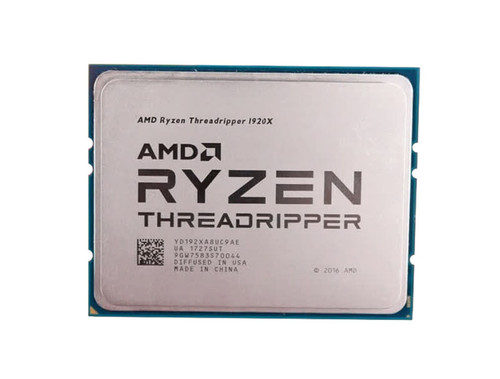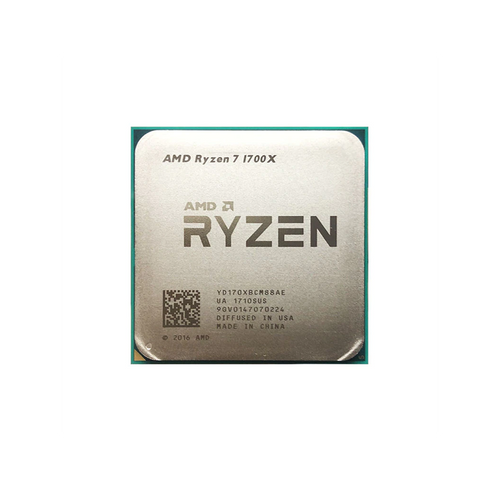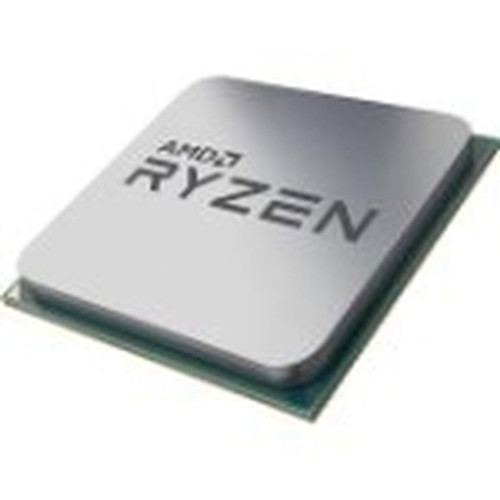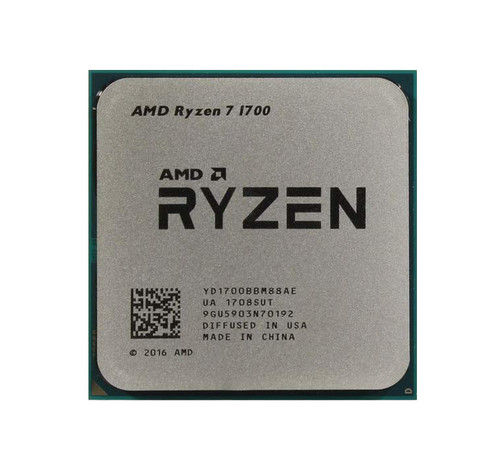-
HP
SKU: ZY510AV
ZY510AV HP 2.80GHz 1066MHz FSB 6MB L2 Cache Intel Core 2 Duo T9600 Mobile Processor Upgrade
Price:$110.89$93.97In Stock -
HP
SKU: Z8U702A203
Z8U702A203 - HP 4 Pin 4-Wire Processor Heatsink & Fan for DX2400/DX7500 Mini Tower
Price:$98.53$80.10In Stock -
Intel
SKU: Z8T90AV
Z8T90AV - Intel Core i7-7700 Quad-core 4 Core 3.60GHz 8.00GT/s DMI3 8MB L3 Cache Socket FCLGA1151 Processor
Price:$359.36$292.16In Stock -
HP
SKU: Z8T14US
Z8T14US - HPE 3.50GHz 9.60GT/s QPI 15MB L3 Cache Intel Xeon E5-2637 v4 Quad Core Processor
Price:$547.58$445.19In Stock -
Intel
SKU: Z530P
Z530P - Intel Atom Single-core 1 Core 1.60GHz 533MHz FSB 512KB L2 Cache Socket FCBGA437 Processor
Price:$167.26$135.99In Stock -
Intel
SKU: Z510P
Z510P - Intel Atom Single-core 1 Core 1.10GHz 400MHz FSB 512KB L2 Cache Socket FCBGA437 Processor
Price:$91.52$74.41In Stock -
Intel
SKU: Z2560
Z2560 - Intel Atom Dual-core 2 Core 1.60GHz 1MB L3 Cache Socket FC-MB4760 Processor
Price:$67.65$55.00In Stock -
Dell
SKU: YX4RJ
YX4RJ - Dell 2.00GHz 6.4GT/s QPI 18MB L3 Cache Socket LGA1567 Intel Xeon X6550 8-Core Processor
Price:$73.80$60.00In Stock -
Dell
SKU: YW816
YW816 Dell 1.80GHz 800MHz 2MB Cache Socket LGA775 Intel Core 2 Duo E4300 Dual-Core Processor Upgrade
Price:$73.80$60.00In Stock -
Price:$2,775.96$2,256.88In Stock
-
Price:$3,823.74$3,108.73In Stock
-
Dell
SKU: YM299
YM299 Dell 1.60GHz 1066MHz FSB 8MB L2 Cache Intel Xeon E5310 Quad Core Processor Upgrade
Price:$90.00$73.17In Stock -
Price:$91.55$74.43In Stock
-
Price:$85.30$69.35In Stock
-
Dell
SKU: YM122
YM122 Dell 2.40GHz 1066MHz FSB 6MB L2 Cache Intel Xeon E7330 Quad Core Processor Upgrade
Price:$73.80$60.00In Stock -
Intel
SKU: YK80542KC90015M
YK80542KC90015M - Intel Itanium Single-core 1 Core 900MHz 400MHz FSB 1.5MB L2 Cache Socket PPGA611 Processor
$0.00In Stock -
Intel
SKU: YK80542KC0013M
YK80542KC0013M - Intel Itanium 2 Single-core 1 Core 1.00GHz 400MHz FSB 3MB L3 Cache Socket PGA611 Processor
Price:$239.84$194.99In Stock -
Price:$3,400.64$2,764.75In Stock
-
Price:$73.80$60.00In Stock
-
Dell
SKU: YJ049
YJ049 Dell 1.60GHz 1066MHz FSB 4MB L2 Cache Intel Xeon 5110 Dual-Core Processor Upgrade
Price:$73.80$60.00In Stock -
Dell
SKU: YG8MC
YG8MC - Dell 2.50GHz 800MHz FSB 2MB L2 Cache Socket LGA775 Intel Pentium E5200 2-Core Processor
Price:$73.80$60.00In Stock -
Dell
SKU: YFC8W
YFC8W - Dell 2.0GHz Intel Xeon Gold 5117 Tetradeca-core (14 Core)Processor for Tower Servers PowerEdge T640
$0.00In Stock -
Intel
SKU: YF80528KC029G0K
YF80528KC029G0K - Intel Xeon Single-core 1 Core 1.70GHz 400MHz FSB 256KB L2 Cache Socket PPGA603 Processor
Price:$72.72$59.12In Stock -
Intel
SKU: YF80528KC025G1M
YF80528KC025G1M - Intel Xeon 1.60GHz 400MHz FSB 1MB L3 Cache Socket 604 Processor
Price:$77.86$63.30In Stock -
Intel
SKU: YF80528KC0251M
YF80528KC0251M - Intel Xeon Single-core 1 Core 1.60GHz 400MHz FSB 1MB L2 Cache Socket PPGA603 Processor
Price:$77.86$63.30In Stock -
Intel
SKU: YF80528KC021G0K
YF80528KC021G0K - Intel Xeon Single-core 1 Core 1.50GHz 400MHz FSB 256KB L2 Cache Socket PPGA603 Processor
Price:$90.93$73.92In Stock -
Intel
SKU: YF80528KC021512
YF80528KC021512 - Intel Xeon Single-core 1 Core 1.50GHz 400MHz FSB 512KB L2 Cache Socket PPGA603 Processor
Price:$67.65$55.00In Stock -
Intel
SKU: YF80528KC017G0K
YF80528KC017G0K - Intel Xeon Single-core 1 Core 1.40GHz 400MHz FSB 256KB L2 Cache Socket PPGA603 Processor
Price:$67.65$55.00In Stock -
Intel
SKU: YF80528KC017512
YF80528KC017512 - Intel Xeon 1.4GHz 400MHz FSB 512KB L3 Cache Socket 604 Processor
Price:$89.35$72.64In Stock -
Dell
SKU: YDY6W
YDY6W - Dell 2.30GHz 9.6GT/s 40MB SmartCache Socket FCLGA2011-3 Intel Xeon E5-2698V3 16-Core Processor for PowerEdge FC630 Server
Price:$963.90$783.66In Stock -
Intel
SKU: YD80528PC033G0K
YD80528PC033G0K - Intel Pentium 4 Single-core 1 Core 1.80GHz 400MHz FSB 256KB L2 Cache Socket PPGA423 Processor
$0.00In Stock -
Intel
SKU: YD80528PC029G0K
YD80528PC029G0K - Intel Pentium 4 Single-core 1 Core 1.70GHz 400MHz FSB 256KB L2 Cache Socket PPGA423 Processor
Price:$105.61$85.86In Stock -
Intel
SKU: YD80528PC025G0K
YD80528PC025G0K - Intel Pentium 4 Single-core 1 Core 1.60GHz 400MHz FSB 256KB L2 Cache Socket PPGA423 Processor
Price:$99.32$80.75In Stock -
Intel
SKU: YD80528PC021G0K
YD80528PC021G0K - Intel Pentium 4 Single-core 1 Core 1.50GHz 400MHz FSB 256KB L2 Cache Socket PPGA423 Processor
Price:$105.61$85.86In Stock -
Intel
SKU: YD80528PC017G0K
YD80528PC017G0K - Intel Pentium 4 Single-core 1 Core 1.40GHz 400MHz FSB 256KB L2 Cache Socket PPGA423 Processor
Price:$128.64$104.59In Stock -
Intel
SKU: YD80528PC013G0K
YD80528PC013G0K - Intel Pentium 4 Single-core 1 Core 1.30GHz 400MHz FSB 256KB L2 Cache Socket PPGA423 Processor
Price:$105.61$85.86In Stock -
AMD
SKU: YD3400C5FHBOX
YD3400C5FHBOX AMD YD3400C5FHBOX Ryzen 5 3400G with Radeon RX Vega 11 Graphics Quad-Core 3.7GHz Socket AM4
Price:$435.15$353.78In Stock -
AMD
SKU: YD3200C5M4MFH
YD3200C5M4MFH - AMD Ryzen 3 3200G Quad-core 4 Core 3.6GHz 4MB L3 Cache Socket AM4 Processor
Price:$340.61$276.92In Stock -
AMD
SKU: YD3200C5FHMPK
YD3200C5FHMPK - AMD Ryzen 3 3200G Quad-core 4 Core 3.6GHz 4MB L3 Cache Socket AM4 Processor
$0.00In Stock -
AMD
SKU: YD3200C5FHBOX
YD3200C5FHBOX AMD YD3200C5FHBOX Ryzen 3 3200G with Radeon Vega 8 Graphics Quad-Core 3.6GHz Socket AM4
Price:$273.01$221.96In Stock -
AMD
SKU: YD3000C6M2OFH
YD3000C6M2OFH - AMD Athlon 3000G Dual-core 2 Core 3.5GHz 4MB L3 Cache Socket AM4 Processor
$0.00In Stock -
AMD
SKU: YD3000C6FHMPK
YD3000C6FHMPK - AMD Athlon 3000G Dual-core 2 Core 3.5GHz 4MB L3 Cache Socket AM4 Processor
$0.00In Stock -
AMD
SKU: YD3000C6FHBOX
YD3000C6FHBOX - AMD Athlon 3000G Dual-core 2 Core 3.5GHz 4MB L3 Cache Socket AM4 Processor
$0.00In Stock -
AMD
SKU: YD299XAZUIHAF
YD299XAZUIHAF - AMD Ryzen Threadripper 2990WX Dotriaconta-core 32 Core 3.0GHz 64MB L3 Cache Socket sTR4 Processor
Price:$2,493.85$2,027.52In Stock -
Price:$3,287.37$2,672.66In Stock
-
AMD
SKU: YD297XAZUHCAF
YD297XAZUHCAF - AMD Ryzen Threadripper 2970WX Tetracosa-core 24 Core 3.0GHz 64MB L3 Cache Socket sTR4 Processor
$0.00In Stock -
AMD
SKU: YD297XAZAFWOF
YD297XAZAFWOF - AMD Ryzen Threadripper 2970WX Tetracosa-core 24 Core 3.0GHz 64MB L3 Cache Socket sTR4 Processor
Price:$2,038.85$1,657.60In Stock -
AMD
SKU: YD295XA8UGAAF
YD295XA8UGAAF - AMD Ryzen Threadripper 2950X Hexadeca-core 16 Core 3.5GHz 32MB L3 Cache Socket sTR4 Processor
$0.00In Stock -
Price:$1,311.06$1,065.90In Stock
-
AMD
SKU: YD292XA8UC9AF
YD292XA8UC9AF - AMD Ryzen Threadripper 2920X Dodeca-core 12 Core 3.5GHz 32MB L3 Cache Socket sTR4 Processor
$0.00In Stock -
AMD
SKU: YD292XA8AFWOF
YD292XA8AFWOF - AMD Ryzen Threadripper 2920X Dodeca-core 12 Core 3.5GHz 32MB L3 Cache Socket sTR4 Processor
Price:$1,637.38$1,331.20In Stock -
AMD
SKU: YD270XBGM88AF
YD270XBGM88AF - AMD Ryzen 7 2700X Octa-core 8 Core 3.7GHz 16MB L3 Cache Socket AM4 Processor
$0.00In Stock -
AMD
SKU: YD270XBGAFMPK
YD270XBGAFMPK - AMD Ryzen 7 2700X Octa-core 8 Core 3.7GHz 16MB L3 Cache Socket AM4 Processor
$0.00In Stock -
Price:$417.65$339.55In Stock
-
AMD
SKU: YD2700BBM88AF
YD2700BBM88AF - AMD Ryzen 7 2700 Octa-core 8 Core 3.2GHz 16MB L3 Cache Socket AM4 Processor
$0.00In Stock -
AMD
SKU: YD2700BBAFMPK
YD2700BBAFMPK - AMD Ryzen 7 2700 Octa-core 8 Core 3.2GHz 16MB L3 Cache Socket AM4 Processor
$0.00In Stock -
Price:$346.22$281.48In Stock
-
AMD
SKU: YD260XBCM6IAF
YD260XBCM6IAF - AMD Ryzen 5 2600X Hexa-core 6 Core 3.6GHz 16MB L3 Cache Socket AM4 Processor
Price:$251.24$204.26In Stock -
AMD
SKU: YD260XBCAFMPK
YD260XBCAFMPK - AMD Ryzen 5 2600X Hexa-core 6 Core 3.6GHz 16MB L3 Cache Socket AM4 Processor
$0.00In Stock -
AMD
SKU: YD260XBCAFBOX
YD260XBCAFBOX - AMD Ryzen 5 2600X Hexa-core 6 Core 3.6GHz 16MB L3 Cache Socket AM4 Processor
Price:$371.73$302.22In Stock -
AMD
SKU: YD2600BBM6IAF
YD2600BBM6IAF - AMD Ryzen 5 2600 Hexa-core 6 Core 3.4GHz 16MB L3 Cache Socket AM4 Processor
Price:$203.96$165.82In Stock -
AMD
SKU: YD2600BBAFMPK
YD2600BBAFMPK - AMD Ryzen 5 2600 Hexa-core 6 Core 3.4GHz 16MB L3 Cache Socket AM4 Processor
$0.00In Stock -
Price:$202.86$164.93In Stock
-
AMD
SKU: YD240GC6M2OFB
YD240GC6M2OFB - AMD Athlon 240GE Dual-core 2 Core 3.5GHz 4MB L3 Cache Socket AM4 Processor
$0.00In Stock -
AMD
SKU: YD240GC6FBMPK
YD240GC6FBMPK - AMD Athlon 240GE Dual-core 2 Core 3.5GHz 4MB L3 Cache Socket AM4 Processor
$0.00In Stock -
AMD
SKU: YD240GC6FBBOX
YD240GC6FBBOX - AMD Athlon 240GE Dual-core 2 Core 3.5GHz 4MB L3 Cache Socket AM4 Processor
$0.00In Stock -
AMD
SKU: YD2400C5M4MFB
YD2400C5M4MFB - AMD Ryzen 5 2400G Quad-core 4 Core 3.6GHz 4MB L3 Cache Socket AM4 Processor
Price:$259.78$211.20In Stock -
AMD
SKU: YD2400C5FBMPK
YD2400C5FBMPK - AMD Ryzen 5 2400G Quad-core 4 Core 3.6GHz 4MB L3 Cache Socket AM4 Processor
$0.00In Stock -
AMD
SKU: YD2400C5FBBOX
YD2400C5FBBOX - AMD Ryzen 5 2400G Quad-core 4 Core 3.6GHz 4MB L3 Cache Socket AM4 Processor
Price:$898.07$730.14In Stock -
AMD
SKU: YD220GC6M2OFB
YD220GC6M2OFB - AMD Athlon 220GE Dual-core 2 Core 3.4GHz 4MB L3 Cache Socket AM4 Processor
$0.00In Stock -
AMD
SKU: YD220GC6FBMPK
YD220GC6FBMPK - AMD Athlon 220GE Dual-core 2 Core 3.4GHz 4MB L3 Cache Socket AM4 Processor
$0.00In Stock -
AMD
SKU: YD220GC6FBBOX
YD220GC6FBBOX - AMD Athlon 220GE Dual-core 2 Core 3.4GHz 4MB L3 Cache Socket AM4 Processor
$0.00In Stock -
AMD
SKU: YD2200C5M4MFB
YD2200C5M4MFB - AMD Ryzen 3 2200G Quad-core 4 Core 3.5GHz 4MB L3 Cache Socket AM4 Processor
$0.00In Stock -
AMD
SKU: YD2200C5FBMPK
YD2200C5FBMPK - AMD Ryzen 3 2200G Quad-core 4 Core 3.5GHz 4MB L3 Cache Socket AM4 Processor
$0.00In Stock -
Price:$417.31$339.28In Stock
-
AMD
SKU: YD2200C4M4MFB
YD2200C4M4MFB - AMD Ryzen 3 2200G Quad-core 4 Core 3.5GHz 4MB L3 Cache Socket AM4 Processor
$0.00In Stock -
AMD
SKU: YD20GGC6M2OFB
YD20GGC6M2OFB - AMD Athlon 200GE Dual-core 2 Core 3.2GHz 4MB L3 Cache Socket AM4 Processor
$0.00In Stock -
AMD
SKU: YD200GC6M2OFB
YD200GC6M2OFB - AMD Athlon 200GE Dual-core 2 Core 3.2GHz 4MB L3 Cache Socket AM4 Processor
$0.00In Stock -
AMD
SKU: YD200GC6FBMPK
YD200GC6FBMPK - AMD Athlon 200GE Dual-core 2 Core 3.2GHz 4MB L3 Cache Socket AM4 Processor
$0.00In Stock -
AMD
SKU: YD200GC6FBBOX
YD200GC6FBBOX - AMD Athlon 200GE Dual-core 2 Core 3.2GHz 4MB L3 Cache Socket AM4 Processor
$0.00In Stock -
AMD
SKU: YD195XA8UGAAE
YD195XA8UGAAE - AMD Ryzen Threadripper 1950X Hexadeca-core 16 Core 3.4GHz 32MB L3 Cache Socket sTR4 Processor
$0.00In Stock -
AMD
SKU: YD195XA8AEWOF
YD195XA8AEWOF - AMD Ryzen Threadripper 1950X Hexadeca-core 16 Core 3.4GHz 32MB L3 Cache Socket sTR4 Processor
Price:$944.64$768.00In Stock -
AMD
SKU: YD192XA8UC9AE
YD192XA8UC9AE - AMD Ryzen Threadripper 1920X Dodeca-core 12 Core 3.5GHz 32MB L3 Cache Socket sTR4 Processor
$0.00In Stock -
AMD
SKU: YD192XA8AEWOF
YD192XA8AEWOF - AMD Ryzen Threadripper 1920X Dodeca-core 12 Core 3.5GHz 32MB L3 Cache Socket sTR4 Processor
$0.00In Stock -
AMD
SKU: YD190XA8U8QAE
YD190XA8U8QAE - AMD Ryzen Threadripper 1900X Octa-core 8 Core 3.8GHz 16MB L3 Cache Socket sTR4 Processor
$0.00In Stock -
AMD
SKU: YD190XA8AEWOF
YD190XA8AEWOF - AMD Ryzen Threadripper 1900X Octa-core 8 Core 3.8GHz 16MB L3 Cache Socket sTR4 Processor
Price:$371.73$302.22In Stock -
AMD
SKU: YD180XBCM88AE
YD180XBCM88AE AMD Ryzen 7 1800X 8-Core 3.60GHz 16MB L3 Cache Socket AM4 Processor
Price:$314.58$255.76In Stock -
AMD
SKU: YD180XBCAEWOF
YD180XBCAEWOF - AMD Ryzen 7 1800X Octa-core 8 Core 3.6GHz 16MB L3 Cache Socket AM4 Processor
Price:$349.87$284.45In Stock -
AMD
SKU: YD180XBCAEMPK
YD180XBCAEMPK - AMD Ryzen 7 1800X Octa-core 8 Core 3.6GHz 16MB L3 Cache Socket AM4 Processor
$0.00In Stock -
AMD
SKU: YD170XBCM88AE
YD170XBCM88AE - AMD Ryzen 7 1700X Octa-core 8 Core 3.4GHz 16MB L3 Cache Socket AM4 Processor
Price:$283.39$230.40In Stock -
AMD
SKU: YD170XBCAEWOF
YD170XBCAEWOF - AMD Ryzen 7 1700X Octa-core 8 Core 3.4GHz 16MB L3 Cache Socket AM4 Processor
Price:$283.39$230.40In Stock -
AMD
SKU: YD170XBCAEMPK
YD170XBCAEMPK - AMD Ryzen 7 1700X Octa-core 8 Core 3.4GHz 16MB L3 Cache Socket AM4 Processor
$0.00In Stock -
AMD
SKU: YD1700BBM88AE
YD1700BBM88AE AMD Ryzen 7 1700X 8-Core 3.00GHz 16MB L3 Cache Socket AM4 Processor
Price:$389.49$316.66In Stock -
AMD
SKU: YD1700BBAEMPK
YD1700BBAEMPK - AMD Ryzen 7 1700 Octa-core 8 Core 3.0GHz 16MB L3 Cache Socket AM4 Processor
$0.00In Stock -
AMD
SKU: YD1700BBAEBOX
YD1700BBAEBOX - AMD Ryzen 7 1700 Octa-core 8 Core 3.0GHz 16MB L3 Cache Socket AM4 Processor
Price:$427.53$347.59In Stock -
AMD
SKU: YD160XBCM6IAE
YD160XBCM6IAE - AMD Ryzen 5 1600X Hexa-core 6 Core 3.6GHz 16MB L3 Cache Socket AM4 Processor
Price:$264.50$215.04In Stock





